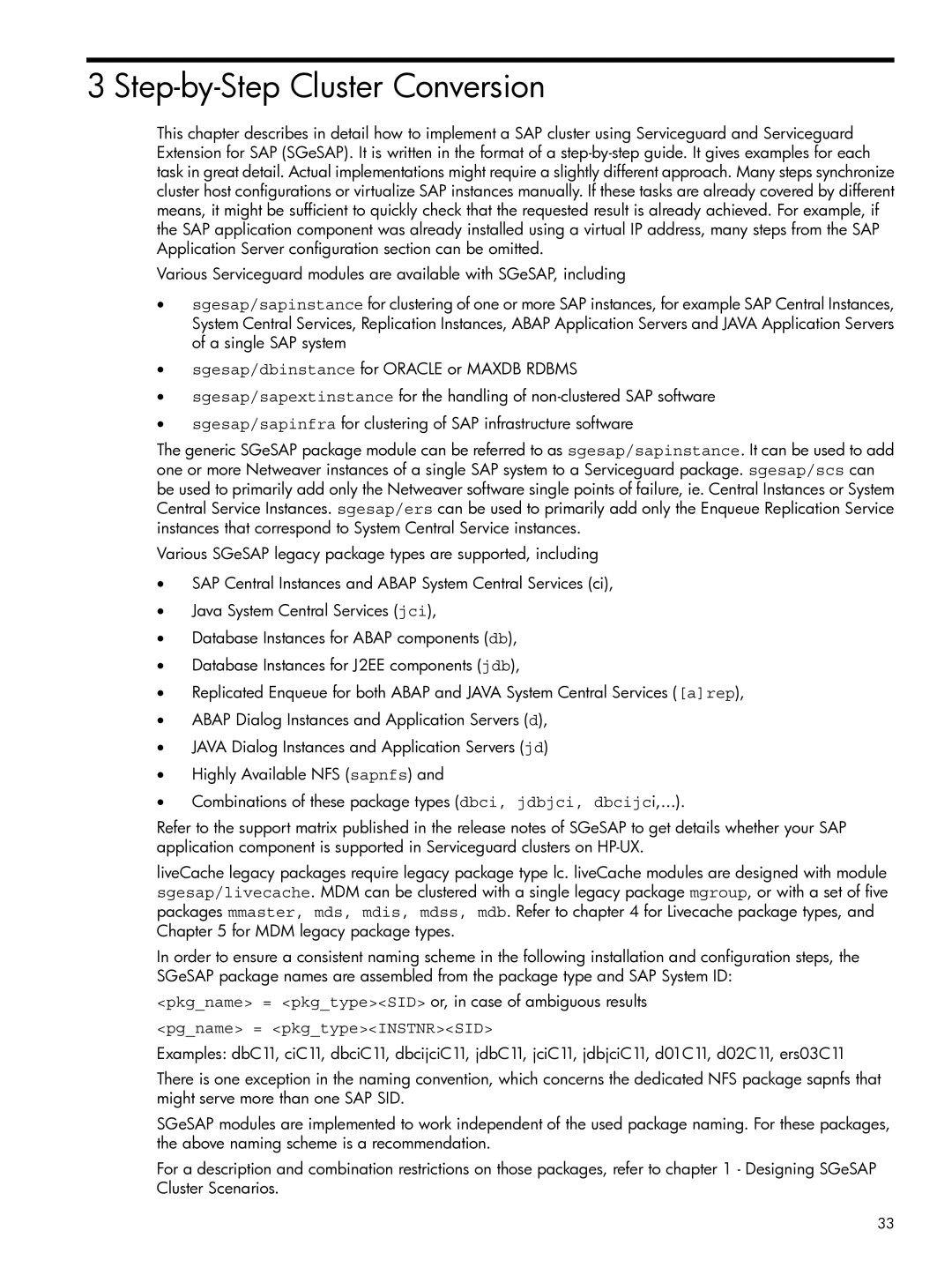3 Step-by-Step Cluster Conversion
This chapter describes in detail how to implement a SAP cluster using Serviceguard and Serviceguard Extension for SAP (SGeSAP). It is written in the format of a
Various Serviceguard modules are available with SGeSAP, including
•sgesap/sapinstance for clustering of one or more SAP instances, for example SAP Central Instances, System Central Services, Replication Instances, ABAP Application Servers and JAVA Application Servers of a single SAP system
•sgesap/dbinstance for ORACLE or MAXDB RDBMS
•sgesap/sapextinstance for the handling of
•sgesap/sapinfra for clustering of SAP infrastructure software
The generic SGeSAP package module can be referred to as sgesap/sapinstance. It can be used to add one or more Netweaver instances of a single SAP system to a Serviceguard package. sgesap/scs can be used to primarily add only the Netweaver software single points of failure, ie. Central Instances or System Central Service Instances. sgesap/ers can be used to primarily add only the Enqueue Replication Service instances that correspond to System Central Service instances.
Various SGeSAP legacy package types are supported, including
•SAP Central Instances and ABAP System Central Services (ci),
•Java System Central Services (jci),
•Database Instances for ABAP components (db),
•Database Instances for J2EE components (jdb),
•Replicated Enqueue for both ABAP and JAVA System Central Services ([a]rep),
•ABAP Dialog Instances and Application Servers (d),
•JAVA Dialog Instances and Application Servers (jd)
•Highly Available NFS (sapnfs) and
•Combinations of these package types (dbci, jdbjci, dbcijci,...).
Refer to the support matrix published in the release notes of SGeSAP to get details whether your SAP application component is supported in Serviceguard clusters on
liveCache legacy packages require legacy package type lc. liveCache modules are designed with module sgesap/livecache. MDM can be clustered with a single legacy package mgroup, or with a set of five packages mmaster, mds, mdis, mdss, mdb. Refer to chapter 4 for Livecache package types, and Chapter 5 for MDM legacy package types.
In order to ensure a consistent naming scheme in the following installation and configuration steps, the SGeSAP package names are assembled from the package type and SAP System ID:
<pkg_name> = <pkg_type><SID> or, in case of ambiguous results
<pg_name> = <pkg_type><INSTNR><SID>
Examples: dbC11, ciC11, dbciC11, dbcijciC11, jdbC11, jciC11, jdbjciC11, d01C11, d02C11, ers03C11
There is one exception in the naming convention, which concerns the dedicated NFS package sapnfs that might serve more than one SAP SID.
SGeSAP modules are implemented to work independent of the used package naming. For these packages, the above naming scheme is a recommendation.
For a description and combination restrictions on those packages, refer to chapter 1 - Designing SGeSAP Cluster Scenarios.
33
